1. Early Life and Background
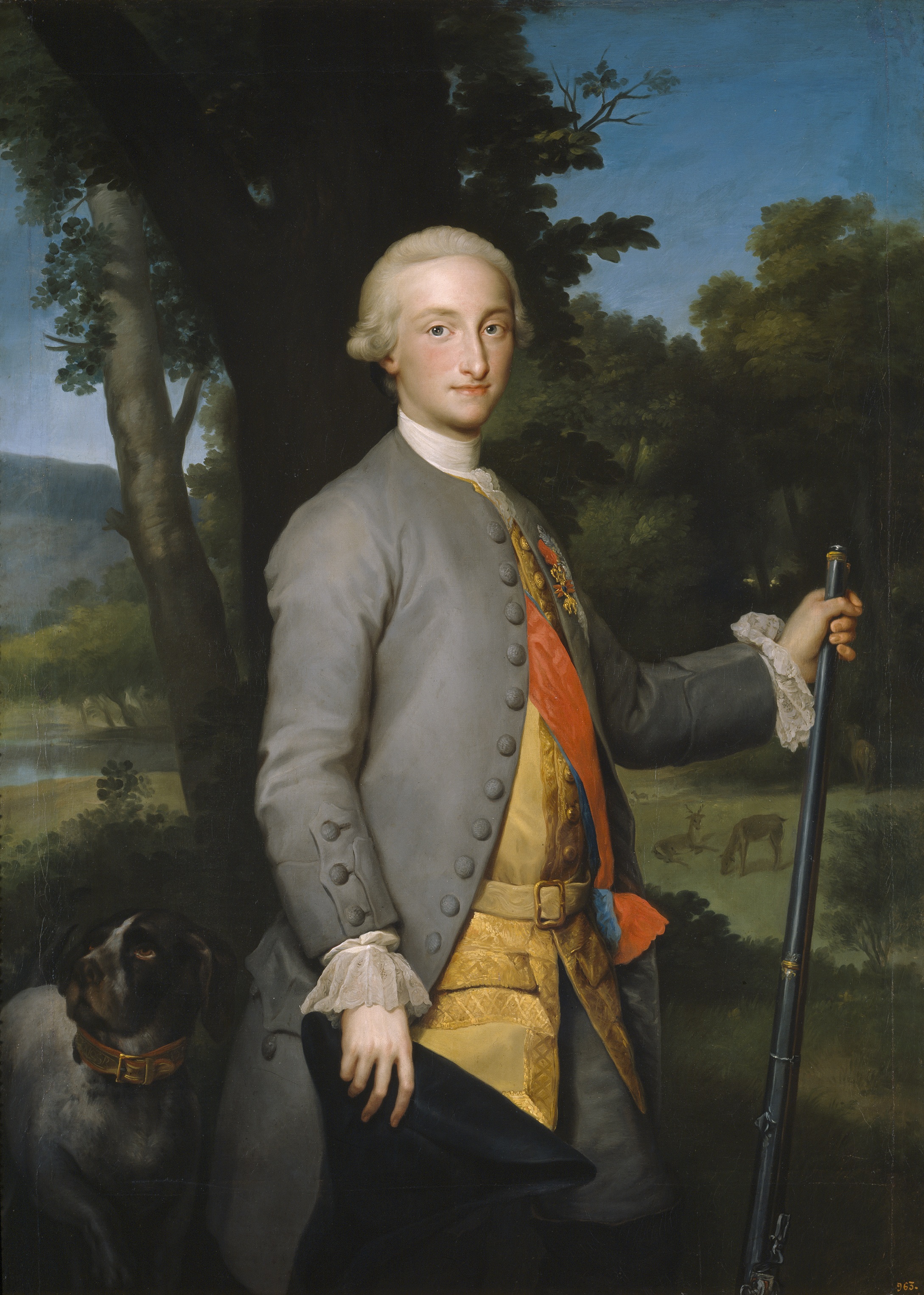
Charles was born on November 11, 1748, in Portici, Naples, while his father, Charles III of Spain, was King of Naples and Sicily. His mother was Maria Amalia of Saxony. Charles was the second son; his elder brother, Infante Philip, Duke of Calabria, was passed over for both thrones due to his learning disabilities and epilepsy. In Naples and Sicily, Charles was known as the Prince of Taranto.
From his mother's Saxon lineage, Charles inherited a robust physique and strong constitution. In his youth, he enjoyed wrestling with the strongest men he could find in the countryside. Despite his physical prowess, he was generally perceived by many as dull-witted and overly honest or simple-minded. His own father reportedly remarked, "Carlos, you are an idiot," when speaking with him. When informed of his arranged marriage to his cousin, Maria Luisa of Parma, Charles, who had no experience with women, was at a loss, to which his father sternly replied, "Idiot Carlos! All women are the same!"
Charles was also known as El CazadorSpanish (meaning "the Hunter") due to his strong preference for sport and hunting over engaging in affairs of state. Historians have described him as good-hearted but weak and simple-minded, and pious. His character was seen as well-meaning, yet he struggled to manage the international crises that arose during his reign. Even before his accession, during his father's lifetime, Charles attempted to replace a favored minister with Pedro Pablo Abarca de Bolea, Count of Aranda, but was interrogated and ousted by his wife.
2. Reign
Charles IV's reign saw Spain grapple with internal economic issues and external pressures from the French Revolution and Napoleonic Wars, largely due to his passive governance and the significant influence of his wife and prime minister.
2.1. Accession and Early Policies
Charles IV ascended to the throne in 1788 following the death of his father, Charles III. Initially, he aimed to continue his father's policies and retained José Moñino, 1st Count of Floridablanca as his prime minister. Floridablanca successfully navigated the Nootka Crisis in 1789, a minor trade and navigation dispute off the west coast of Vancouver Island that threatened to escalate into a major conflict with Great Britain. Despite Spain's alliance with France, the French refused to offer support, leaving Floridablanca with no choice but to capitulate to British terms and negotiate the Nootka Convention, a humiliating outcome for Spain.
In 1792, Floridablanca was ousted by political and personal rivals and replaced by the liberal-leaning Pedro Pablo Abarca de Bolea, 10th Count of Aranda. However, in the wake of the war against Republican France, Aranda himself was soon replaced by Manuel Godoy. Godoy, a favorite of Queen Maria Luisa and widely believed to be her lover, enjoyed the lasting favor of the King.
2.2. Governance and Administration
Despite a profound belief in the sanctity of the monarchy and maintaining the appearance of an absolute and powerful king, Charles IV never took more than a passive role in his own government. He largely delegated state affairs to his wife, Maria Luisa of Parma, and his appointed first minister, Manuel Godoy. While the French Revolution unfolded, leading to the execution of his Bourbon relative Louis XVI of France and his queen, Marie Antoinette, and the subsequent rise of Napoleon Bonaparte, Charles remained preoccupied with hunting.
In contrast to his father, Charles III, who was an active monarch pursuing vigorous Bourbon Reforms to reinvigorate Spain politically and economically, Charles IV was a do-nothing king. His reign was characterized by a domineering wife and an inexperienced yet ambitious first minister. This combination of an inept king, a queen widely perceived to have lovers (including Godoy), and a prime minister with his own agenda led to increasing alienation of the monarchy from its subjects. Godoy effectively controlled the Queen's office and, by extension, the King's entire life.
2.3. Foreign Policy and Wars

In foreign policy, Godoy initially continued Aranda's stance of neutrality towards France. However, after Spain protested the execution of Louis XVI in 1793, France declared war on Spain. In response, Portugal and Spain signed a treaty of mutual protection against France. Spain suffered significant defeats in the Siege of Toulon and the War of the Pyrenees in 1794. In June 1795, Spain signed the Treaty of Basel, ceding part of Hispaniola Island to France in exchange for peace. For his role in securing this peace, Godoy was granted the title "Prince of Peace."
In August 1796, France compelled Godoy to enter into an alliance through the Second Treaty of San Ildefonso, forcing Spain to declare war on Great Britain. Consequently, Spain became one of the maritime empires allied with Republican France during the French Revolutionary Wars. Spain suffered a major naval defeat against the British in the Battle of Cape St. Vincent in 1797. Despite this alliance, France often failed to provide adequate support and readily abandoned its relationship with Spain, leading to Godoy's temporary fall from power in 1798, though his influence remained.
In October 1800, a secret Third Treaty of San Ildefonso was signed with France, ceding the North American colony of Louisiana to France in exchange for territory in the Italian Peninsula. Napoleon, who envisioned building a colonial empire in North America, argued that a French presence there would help counter British influence and protect Spanish colonies in South America.
Spain continued its alliance with France, supporting the Continental Blockade. However, after the Battle of Trafalgar in 1805, where the Spanish fleet suffered a devastating loss to the British, Spain withdrew its support from the blockade. Following Napoleon's victory over Prussia in 1807, Godoy again steered Spain towards the French side. This constant shifting of alliances devalued Charles IV's standing as a trustworthy ally, further increasing Godoy's unpopularity and strengthening the fernandistas-supporters of Crown Prince Ferdinand-who advocated for an alliance with the United Kingdom.
2.4. Domestic Policy and Economic Challenges
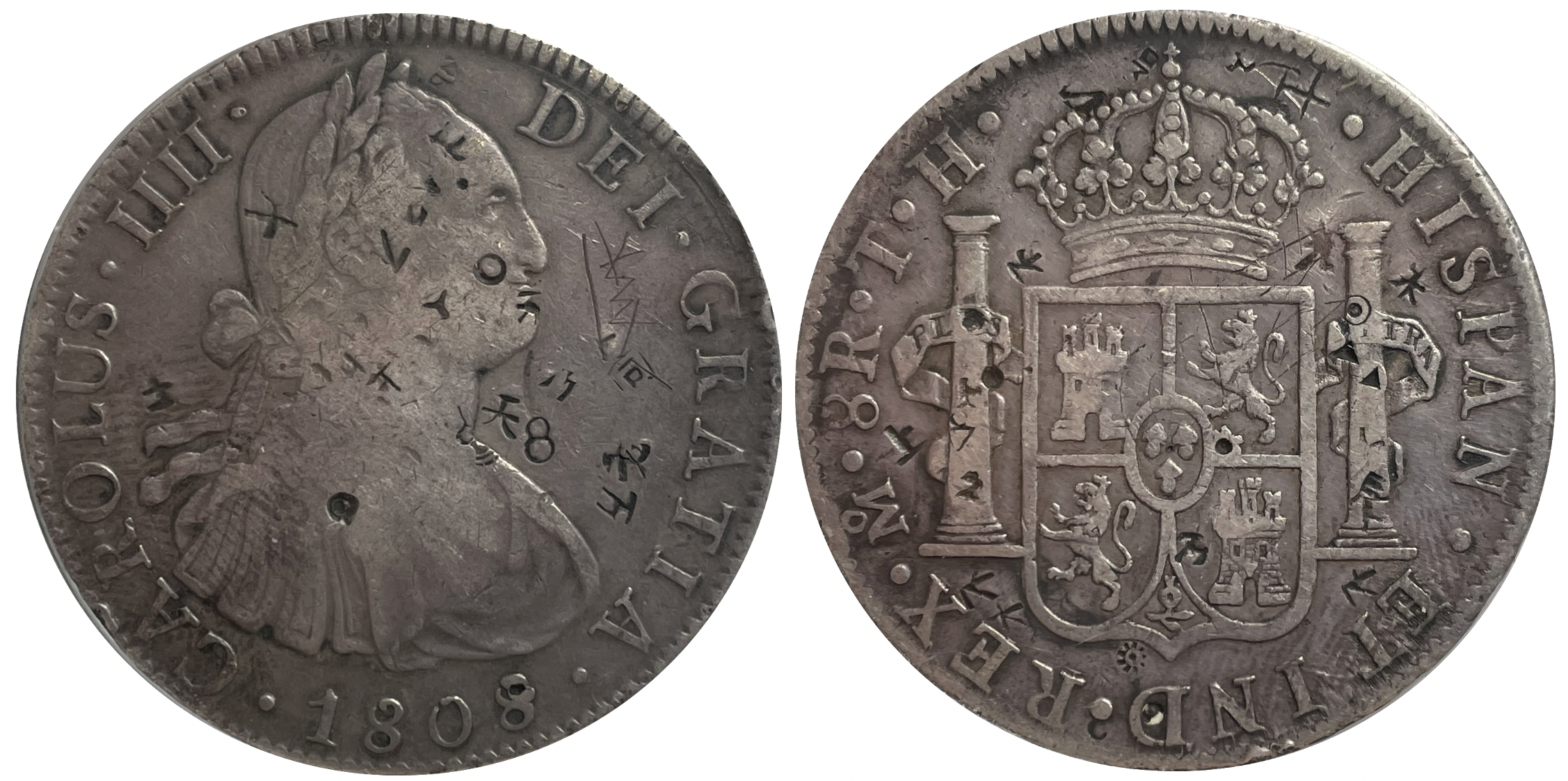
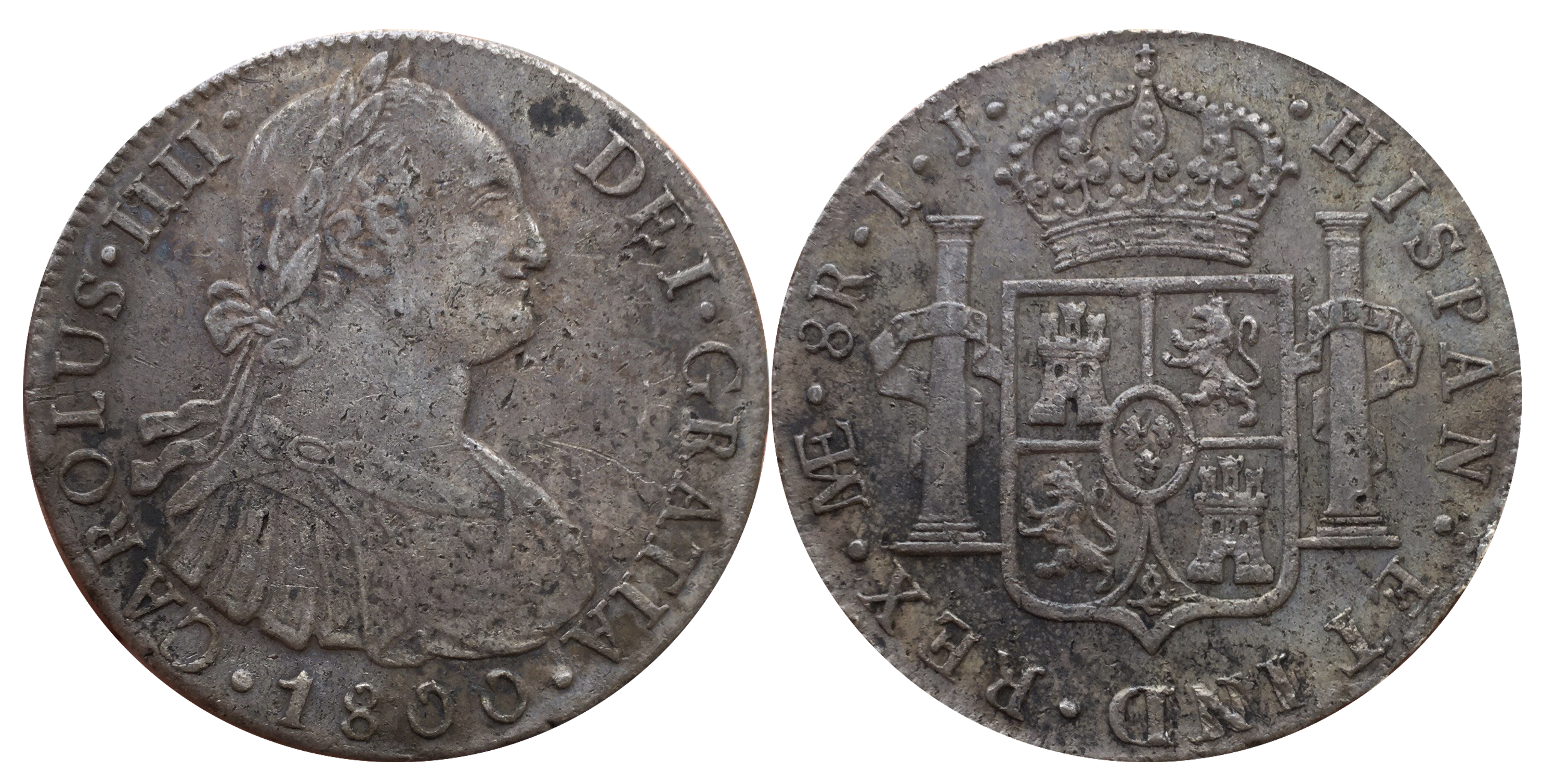
Spain's economic problems were long-standing, but they significantly worsened as the country became entangled in wars pursued by its French ally. Financial needs heavily influenced Charles IV's domestic and foreign policies. Godoy's economic measures further intensified public discontent with the regime.
In an effort to implement significant economic changes, Gaspar Melchor de Jovellanos, a reformist and Jansenist conservative, proposed major structural reforms to land tenure aimed at revitalizing agriculture. His 1795 work, Informe en el expediente de ley agraria, argued that Spain needed a thriving agricultural sector to support population growth and prosperity. Jovellanos identified the concentration of land ownership, traditional practices, and institutional barriers as core problems for agriculture. He advocated for the division and sale of public lands held by villages, as well as the vast territories controlled by the Mesta, an organization of livestock owners who maintained grazing lands for their exclusive use. Jovellanos also called for the abolition of entailed properties (mayorazgos), which allowed landed estates to pass undivided through generations of aristocrats, and the sale of lands held by the Catholic Church. The ultimate goal of these policies was to create a class of yeoman farmers in Spain who, motivated by self-interest, would make agricultural land more productive, though this would inevitably undermine the power of the Church and the aristocracy.
As the crown's immediate revenue situation became more precarious, in 1804, a decree known as the 'Consolidación de Vales Reales' was imposed on its overseas empire. This measure forced the Church to immediately call in the long-term mortgages it had extended. While primarily intended to undermine the wealth and power of the Church, this ill-considered royal decree led to financial ruin for many wealthy landowning elites who had no means to fully repay their mortgaged properties. This policy is widely regarded as a major contributing factor to the independence movements in New Spain (Mexico). Although the decree was suspended after Charles IV and Ferdinand VII abdicated, its implementation significantly eroded elite support for the monarchy.
2.5. Scientific Expeditions and Exploration
During Charles IV's reign, the crown continued to sponsor significant scientific expeditions, some of which had been initially authorized by his father, Charles III. These included the Royal Botanical Expedition to New Granada (1783-1816) and the Royal Botanical Expedition to New Spain (1787-1803), both of which received royal funding.
The Malaspina Expedition (1789-1794) was a crucial scientific voyage led by Spanish naval commander Alessandro Malaspina. Accompanied by naturalists and botanical illustrators, the expedition gathered extensive information for the Spanish crown. In 1803, Charles IV authorized the Balmis Expedition, a philanthropic mission aimed at vaccinating Spain's overseas territories against smallpox. Furthermore, in 1799, Charles IV granted the Prussian aristocrat and scientist Alexander von Humboldt permission to travel freely throughout Spanish America, with royal officials encouraged to assist him in his investigations of key regions within the Spanish Empire. Humboldt's Political Essay on the Kingdom of New Spain emerged as a pivotal publication from his five-year travels.
2.6. Character and Personal Interests
Charles IV, though well-meaning and pious, found himself overwhelmed by a series of international crises that exceeded his capacity to handle. He was described by some as "despotic, sluggish, and stupid," while others noted his good-hearted but simple-minded nature. His primary passion was hunting, earning him the nickname "El Cazador" ("the Hunter"). He was also known to have enjoyed wrestling with the strongest men he could find in the countryside during his younger years.
The renowned Spanish painter Francisco Goya created several official court portraits of Charles IV, including the famous "The Family of Charles IV". Many art critics interpret these portraits as subtle satires on the King's perceived vacuity or as critiques of his inaction and neglect of state affairs, particularly in contrast to the perceived dominance of Queen Maria Luisa.
3. Political Crisis and Abdication
The late years of Charles IV's reign were marked by severe political instability, fueled by public discontent and court intrigues, which ultimately led to his downfall.
3.1. Causes of Discontent
The monarchy's prestige among the Spanish population suffered a sharp decline due to a combination of economic troubles, widespread rumors about a sexual relationship between Queen Maria Luisa and Manuel Godoy, and the King's perceived ineptitude. The financial strain on the kingdom, exacerbated by costly wars, led to unpopular fiscal measures that burdened the populace.
Meanwhile, Crown Prince Ferdinand, anxious to assume the throne and deeply jealous of Godoy's influence, actively worked to undermine his father's rule and the prime minister. This internal court struggle, coupled with the popular perception of a corrupt and ineffective government, created a volatile political climate.
3.2. Tumult of Aranjuez and Abdication
The simmering discontent erupted into open revolt in March 1808. On March 18, a popular uprising, known as the Tumult of Aranjuez, occurred at the royal winter palace in Aranjuez. This rebellion was instigated by reformist factions who supported Crown Prince Ferdinand and were fed up with the perceived corruption and incompetence of Godoy's government.
Overwhelmed by the revolt, Charles IV was forced to abdicate on March 19, 1808, in favor of his son, who then ascended to the throne as Ferdinand VII. However, Charles IV soon attempted to reverse his abdication and appealed to Napoleon Bonaparte for support, creating a power struggle between father and son. At this time, Napoleon already had approximately 100,000 soldiers stationed in Spain, ostensibly due to the ongoing War of the Third Coalition, but effectively giving him control over the country.
3.3. Bayonne Abdications and French Intervention
Napoleon, sensing an opportunity to assert control over Spain, intervened in the internal dispute. He summoned both Charles IV and Ferdinand VII to Bayonne, France, in April 1808. Under duress and intimidation, Napoleon forced both father and son to abdicate their claims to the Spanish throne. Charles IV was effectively imprisoned at Fontainebleau, and Ferdinand VII was confined to Valencia Castle.
Napoleon then declared the Bourbon dynasty of Spain deposed and installed his elder brother, Joseph Bonaparte, as King Joseph I of Spain. This dramatic intervention and the imposition of a foreign monarch ignited widespread popular resistance across Spain, leading to the brutal and protracted Peninsular War. Napoleon justified his conquest by accusing Spain of violating the Continental Blockade through wool smuggling with Britain.
4. Later Life and Death
Following Napoleon's deposition of the Bourbon dynasty, the former King Charles IV, his wife Maria Luisa, and former Prime Minister Manuel Godoy were held captive in France. They resided first at the Château de Compiègne and then spent three years in Marseille, where a neighborhood was named after him.
After the collapse of the Napoleonic regime and the restoration of Ferdinand VII to the Spanish throne, Charles IV spent his final years in exile. He drifted across Europe until 1812, when he finally settled in Rome, residing in the Palazzo Barberini. His wife, Maria Luisa, died on January 2, 1819. Charles IV followed her shortly thereafter, dying on January 20, 1819, in Rome. Sir Francis Ronalds provided a detailed account of his funeral in his travel journal.
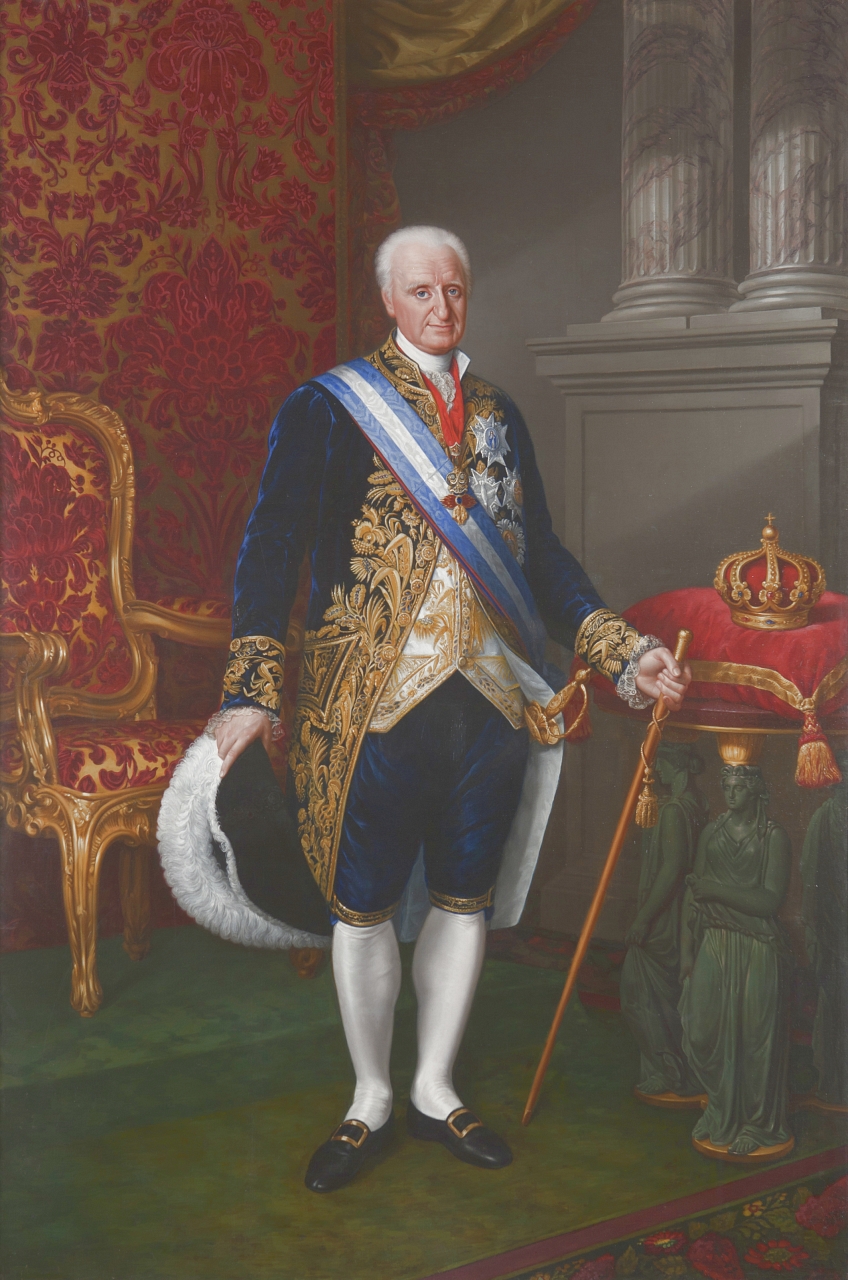
5. Family
Charles IV's family life was central to his personal and political narrative, particularly his marriage to Maria Luisa of Parma and the numerous children they had, including the future King Ferdinand VII.
5.1. Marriage and Children
Charles IV married his first cousin, Maria Luisa of Parma, the daughter of Philip, Duke of Parma, in 1765. The couple had fourteen children, seven of whom survived into adulthood.
| Name | Portrait | Lifespan | Notes |
|---|---|---|---|
| Carlos Clemente Infante of Spain | 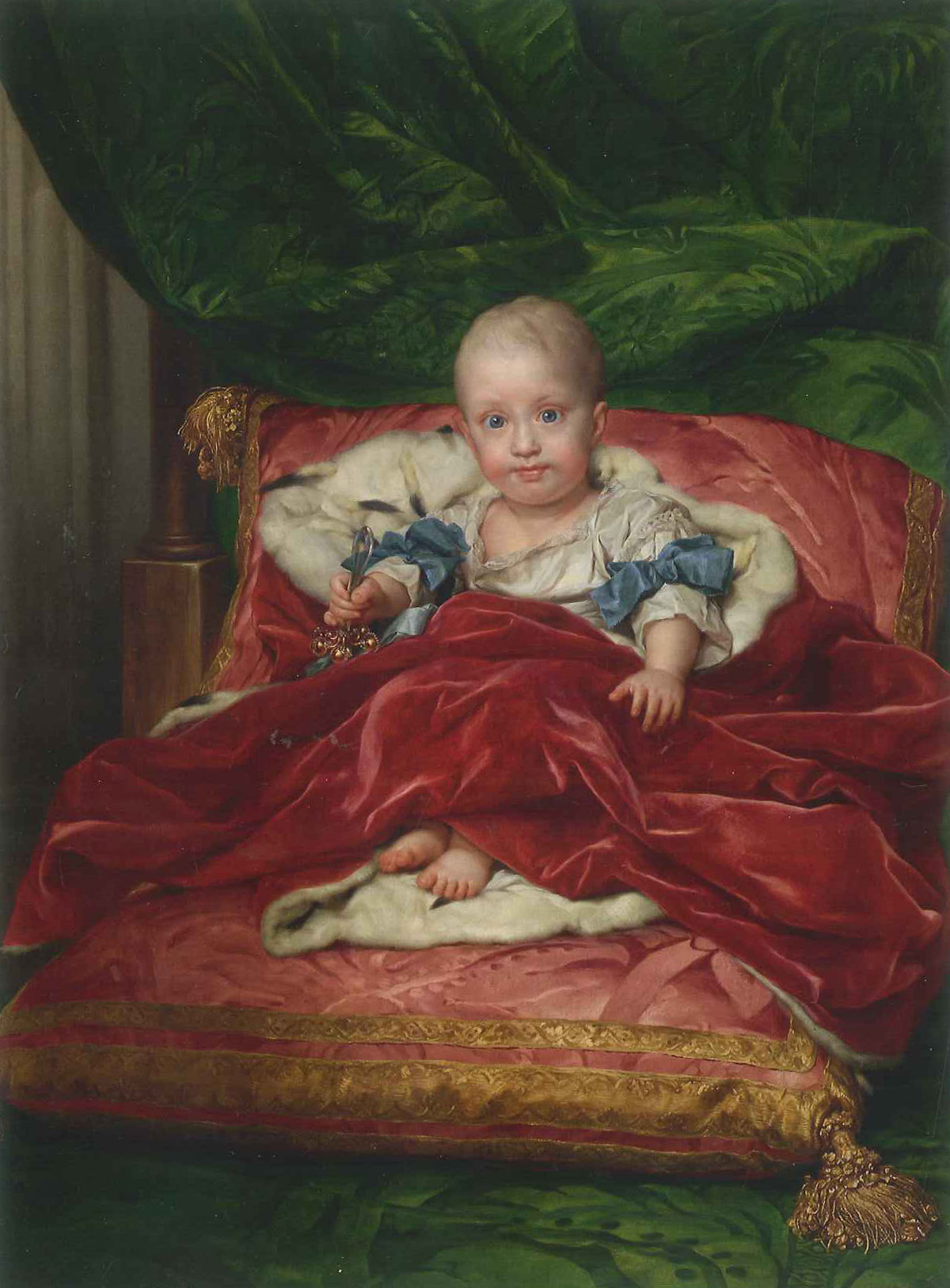 | 19 September 1771 - 7 March 1774 | Born and died at El Escorial; baptized on his birth day, with Charles III representing "the Holy Father" at the christening. Pope Clement XIV celebrated Carlos' birth and sent consecrated swaddling clothes. Died young. |
| Carlota Joaquina Queen of Portugal and the Algarves | 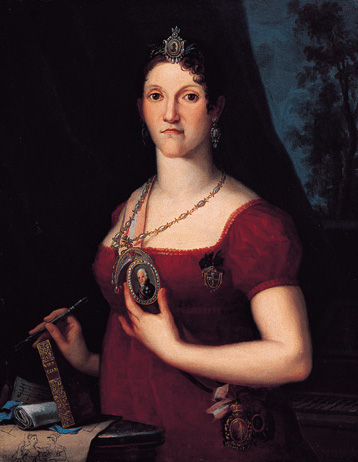 | 25 April 1775 - 7 January 1830 | Born at the Royal Palace of Aranjuez, she married her first cousin John VI of Portugal in 1785 and became Queen consort of Portugal in 1816. She had issue, including the future Pedro I of Brazil. She died at Queluz National Palace. |
| Maria Luisa Infanta of Spain |  | 11 September 1777 - 2 July 1782 | Born and died at the Royal Palace of La Granja de San Ildefonso. Died young. |
| María Amalia Infanta of Spain | 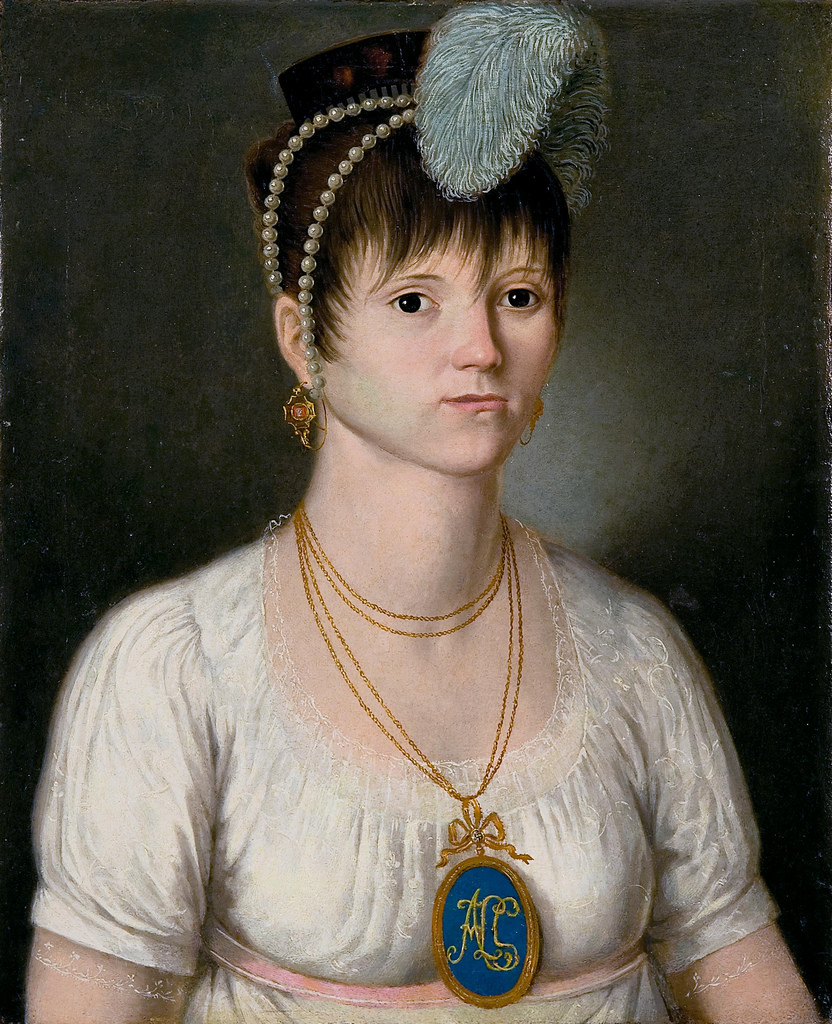 | 9 January 1779 - 22 July 1798 | Born at the Royal Palace of Aranjuez, she married her uncle Infante Antonio Pascual of Spain in 1795. She gave birth to a stillborn son in 1798 and died shortly thereafter. |
| Carlos Domingo Infante of Spain | 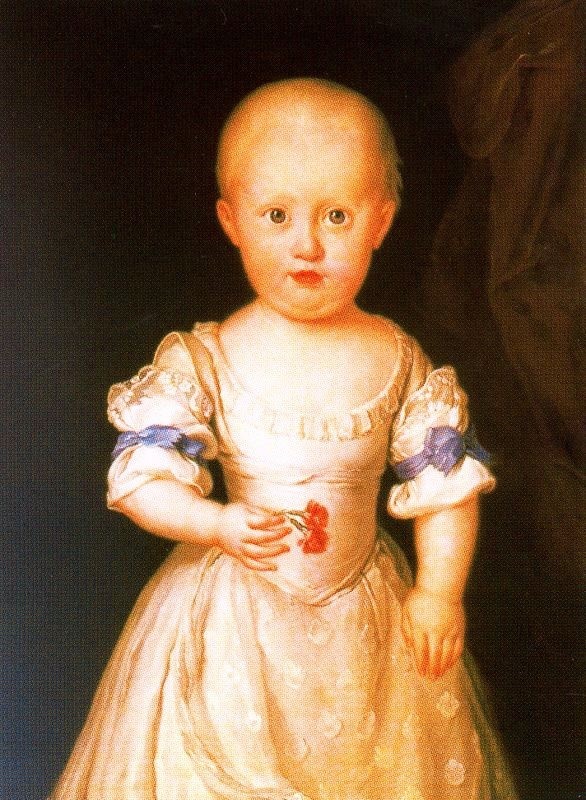 | 5 March 1780 - 11 June 1783 | Born at the Royal Palace of El Pardo and died at the Royal Palace of Aranjuez. After his birth, his father pardoned all convicts from Puerto San Julián as a sign of celebration. Died in childhood. |
| Maria Luisa Queen of Etruria Duchess of Lucca | 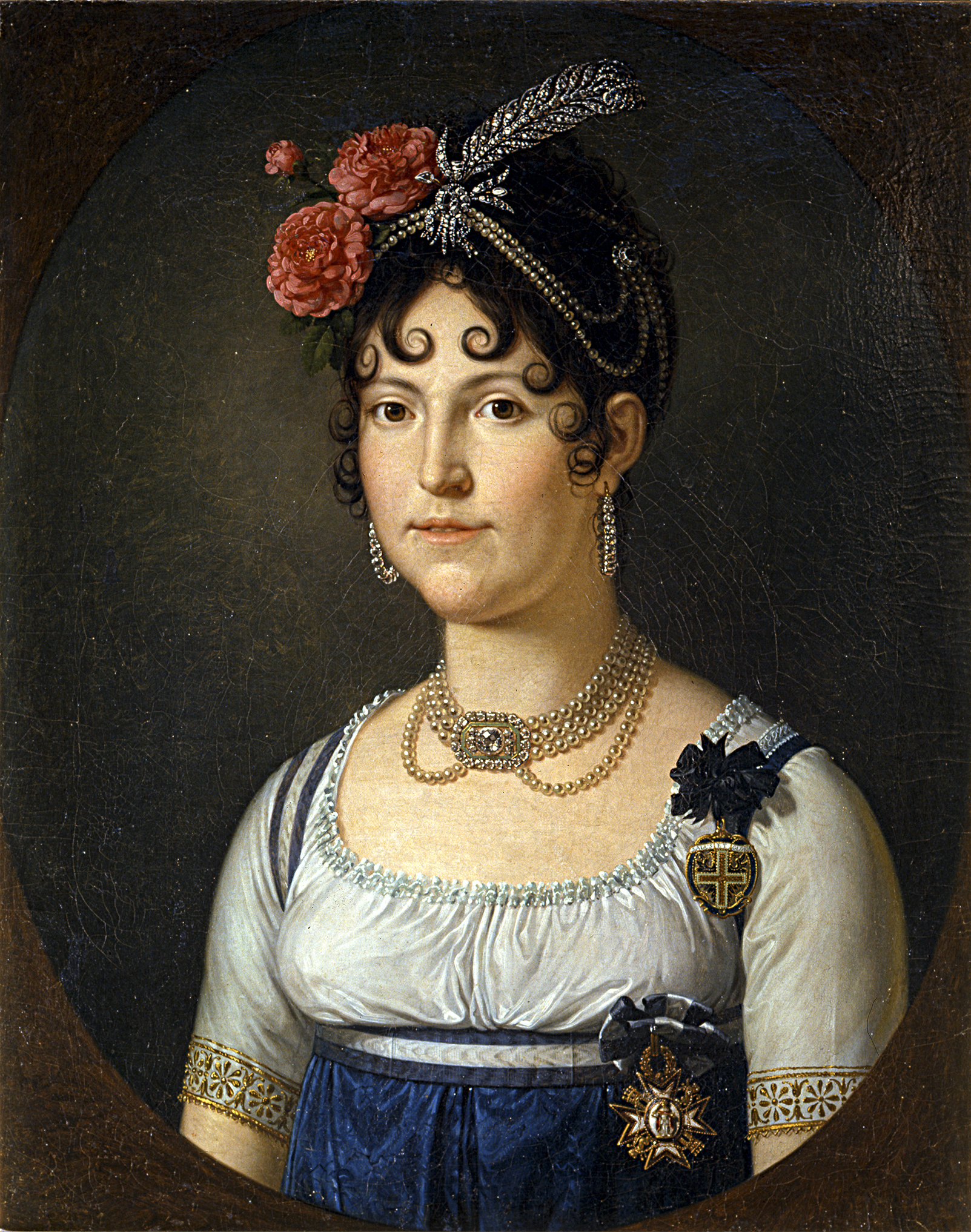 | 6 July 1782 - 13 March 1824 | Born at the Royal Palace of La Granja de San Ildefonso, she married her first cousin Louis, King of Etruria in 1795 and had issue, including Charles II, Duke of Parma. She became Duchess of Lucca in her own right in 1817 and died in Rome in 1824 of cancer. |
| Carlos Francisco de Paula Infante of Spain | 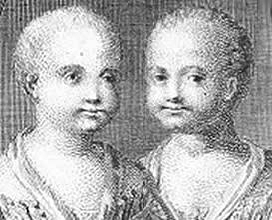 | 5 September 1783 - 11 November 1784 | Twin with Felipe Francisco de Paula, born and died at the Royal Palace of La Granja de San Ildefonso. Their birth was an important event for Spain, providing succession security, which was truncated by their early deaths. Both died in childhood. |
| Felipe Francisco de Paula Infante of Spain |  | 5 September 1783 - 18 October 1784 | Twin with Carlos Francisco de Paula, born and died at the Royal Palace of La Granja de San Ildefonso. Died in childhood. |
| Fernando (VII) King of Spain | 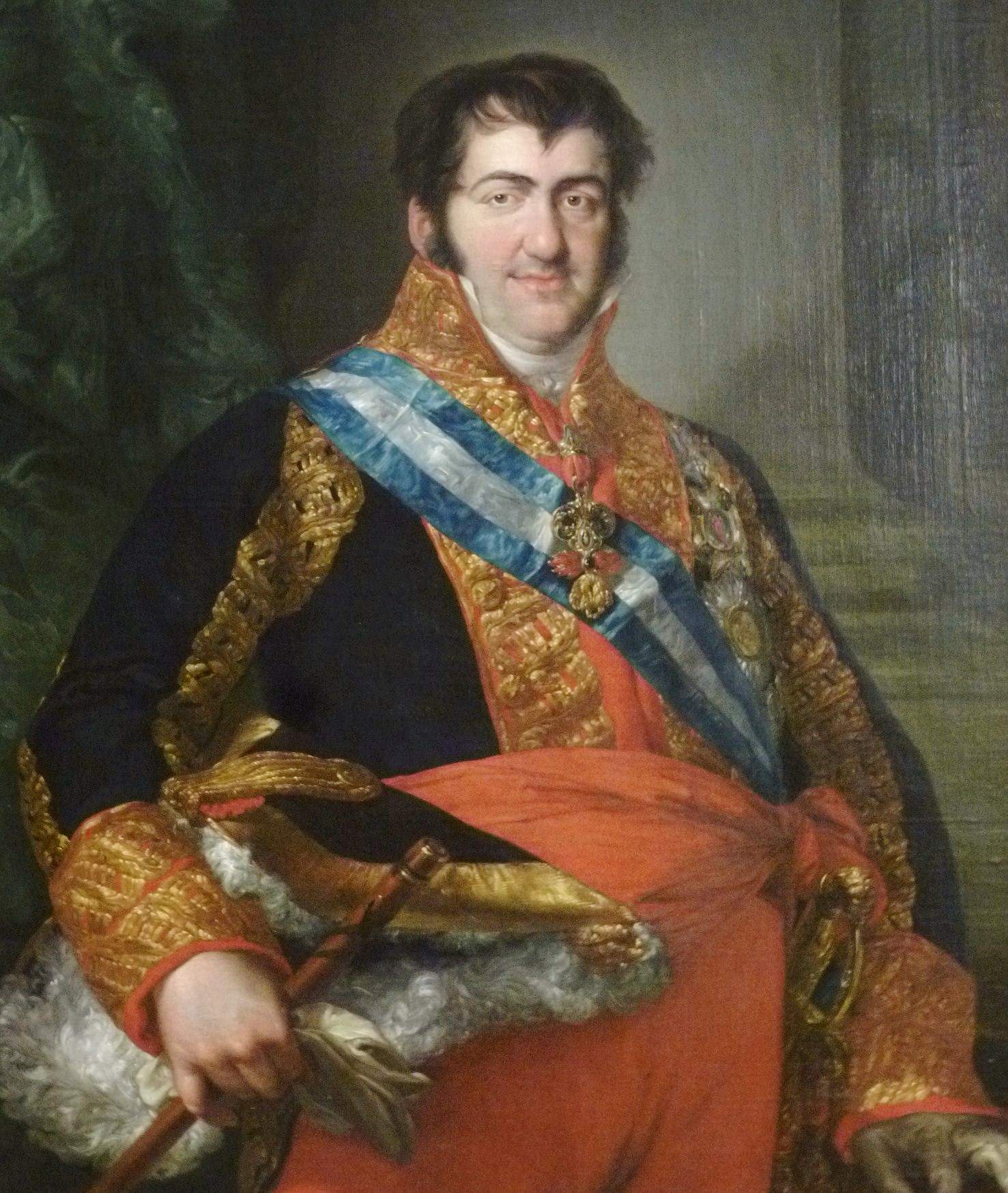 | 14 October 1784 - 29 September 1833 | Born and died at El Escorial, he succeeded his father as King in 1808 but was deposed by Joseph Bonaparte one month later. He married his first cousin Princess Maria Antonia of Naples and Sicily in 1802 (no issue). Reinstated as King in 1813. He married his niece Maria Isabel of Portugal in 1816 (had issue). He married Maria Josepha Amalia of Saxony in 1819 (no issue). He married his niece Maria Christina of the Two Sicilies in 1829 (had issue, including the future Isabella II of Spain). Died in 1833. |
| Carlos María Isidro Benito Count of Molina | 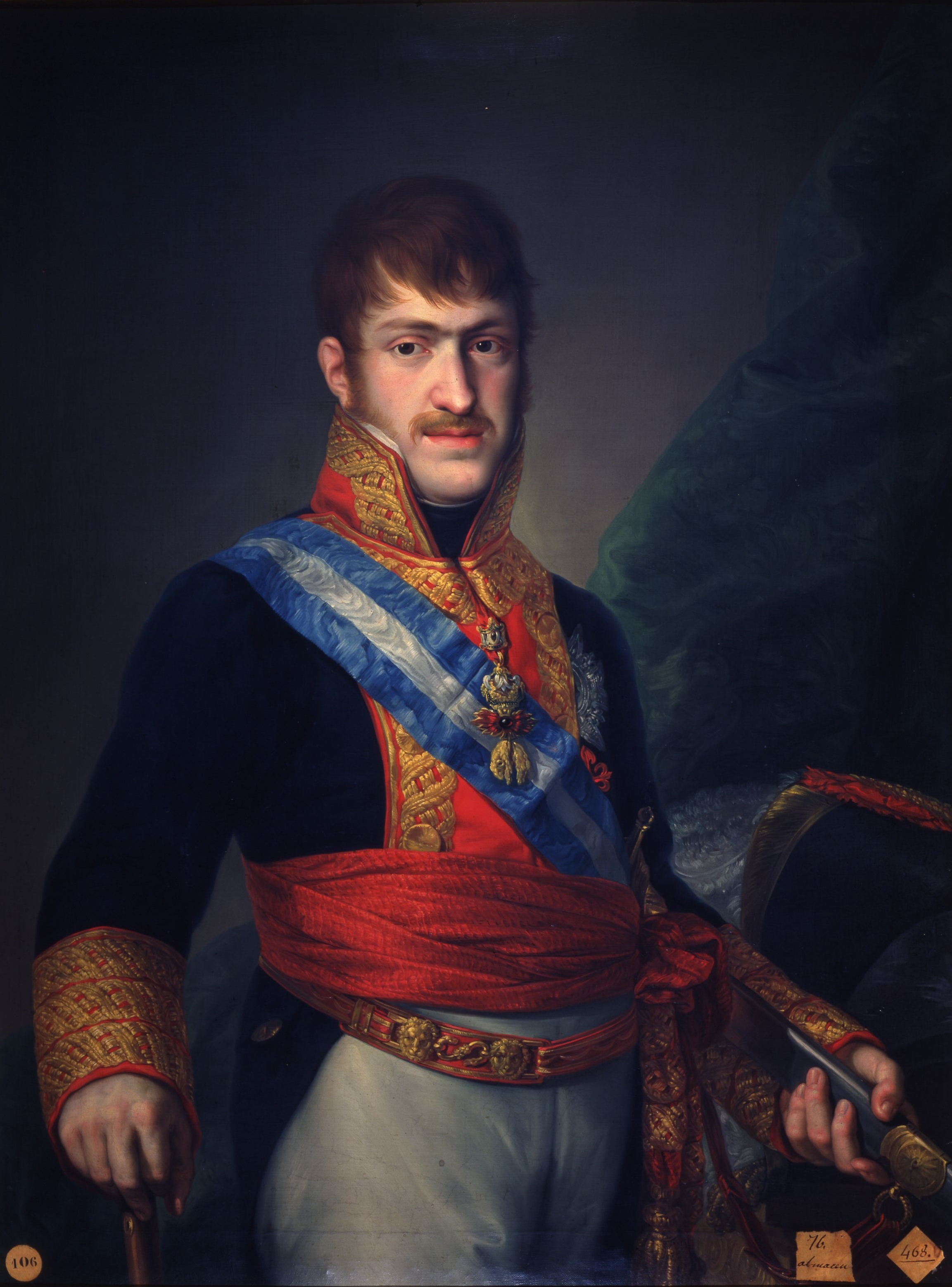 | 29 March 1788 - 10 March 1855 | Born at the Royal Palace of Aranjuez. He married his niece Infanta Maria Francisca of Portugal in 1816 (had issue). He married his niece Maria Teresa, Princess of Beira in 1838 (no issue). He was the first Carlist pretender to the throne of Spain as "Carlos V". He used the title "Count of Molina" between 1845 and his death in 1855. |
| María Isabel Queen of the Two Sicilies | 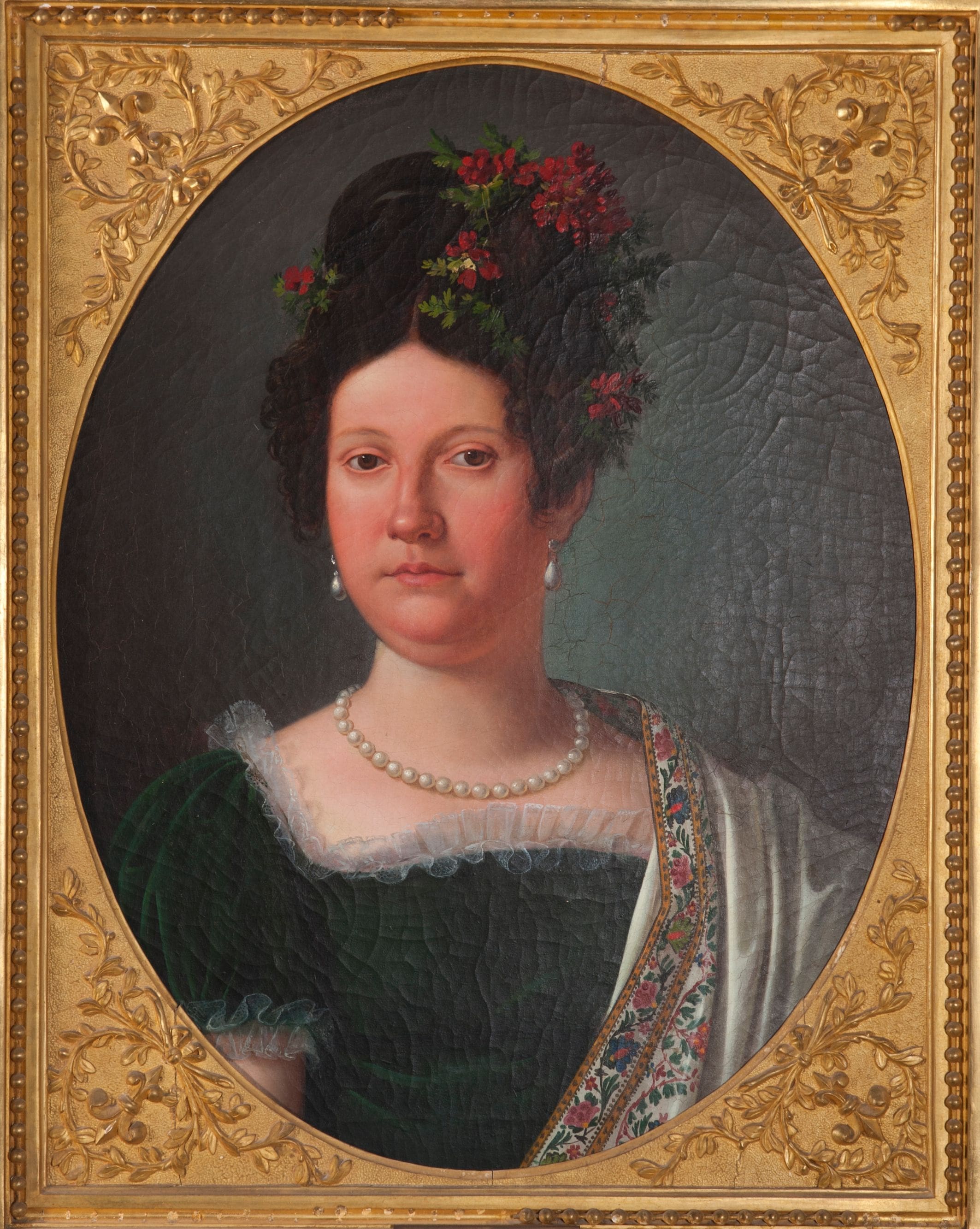 | 6 July 1789 - 13 September 1848 | Born at the Royal Palace of Madrid, she married her first cousin Francis I of the Two Sicilies in 1802 and had issue, including the future Ferdinand II of the Two Sicilies. She was Queen consort between 1825 and 1830, the year of her husband's death. She died at the Palace of Portici in 1848. |
| Maria Teresa Infanta of Spain | 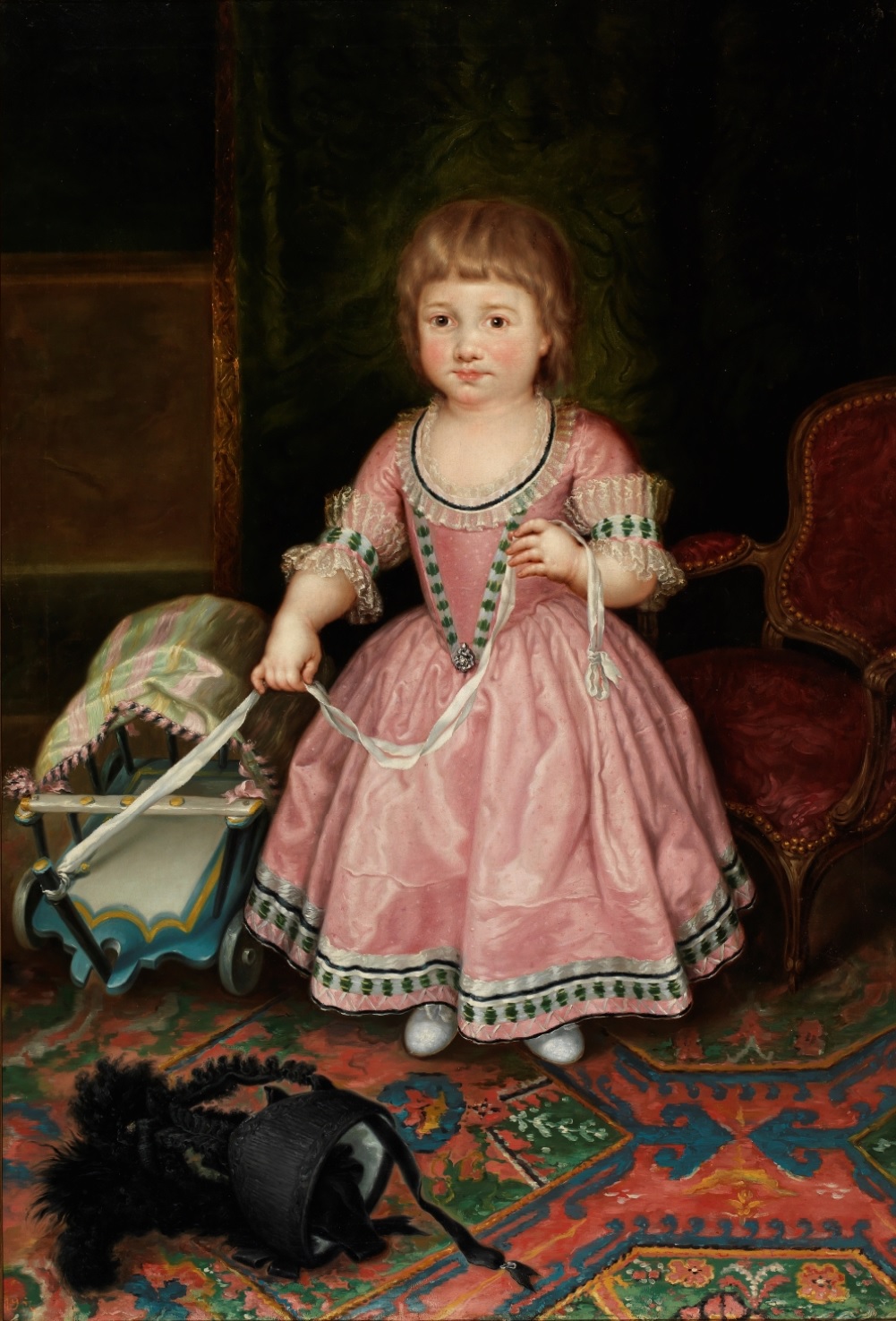 | 16 February 1791 - 2 November 1794 | Born at the Royal Palace of Aranjuez and died at El Escorial. Died in childhood of smallpox. |
| Felipe Maria Infante of Spain | 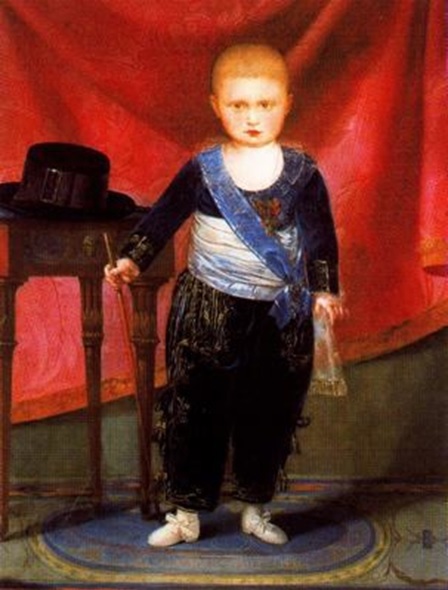 | 28 March 1792 - 1 March 1794 | Born at the Royal Palace of Aranjuez and died at the Royal Palace of Madrid. Died in childhood. |
| Francisco de Paula Duke of Cadiz | 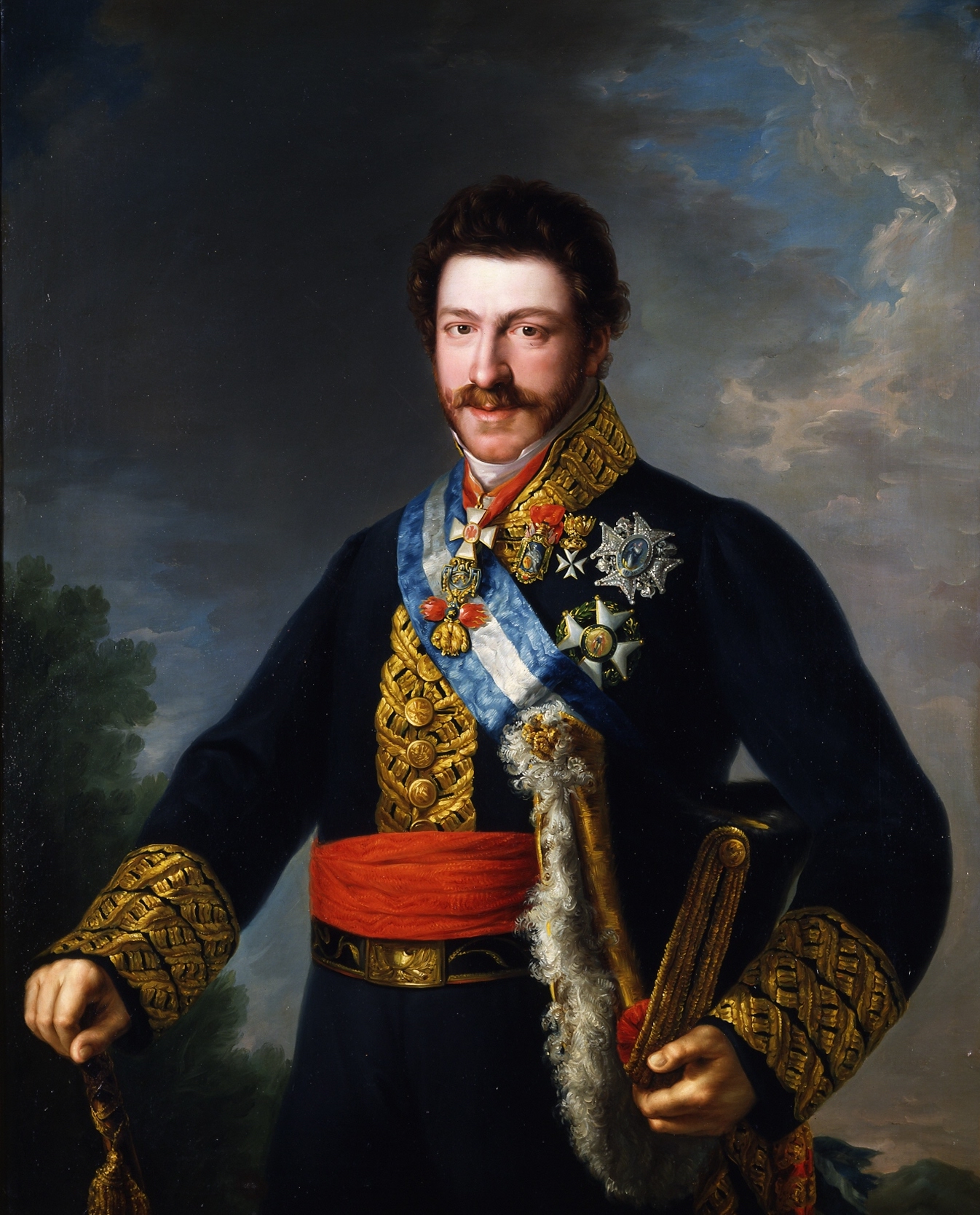 | 10 March 1794 - 13 August 1865 | Born at the Royal Palace of Aranjuez, he married his niece Princess Luisa Carlotta of Naples and Sicily in 1819 and had issue. Died in Madrid in 1865. |

6. Ancestry
Charles IV's ancestry traces back to prominent European royal houses, reflecting the extensive dynastic connections of the House of Bourbon.
- 1. Charles IV of Spain
- 2. Charles III of Spain
- 3. Maria Amalia of Saxony
- 4. Philip V of Spain
- 5. Elisabeth Farnese
- 6. Augustus III of Poland
- 7. Maria Josepha of Austria
- 8. Louis, Dauphin of France
- 9. Maria Anna Victoria of Bavaria
- 10. Odoardo Farnese, Hereditary Prince of Parma
- 11. Dorothea Sophie of Neuburg
- 12. Augustus II of Poland
- 13. Christiane Eberhardine of Brandenburg-Bayreuth
- 14. Joseph I, Holy Roman Emperor
- 15. Wilhelmine Amalie of Brunswick
- 16. Louis XIV of France
- 17. Maria Theresa of Spain
- 18. Ferdinand Maria, Elector of Bavaria
- 19. Henriette Adelaide of Savoy
- 20. Ranuccio II Farnese, Duke of Parma
- 21. Isabella d'Este, Duchess of Parma
- 22. Philipp Wilhelm, Elector Palatine
- 23. Elisabeth Amalie of Hesse-Darmstadt
- 24. John George III, Elector of Saxony
- 25. Anna Sophie of Denmark
- 26. Christian Ernst, Margrave of Brandenburg-Bayreuth
- 27. Sophie Luise of Württemberg
- 28. Leopold I, Holy Roman Emperor
- 29. Eleonore Magdalene of Neuburg
- 30. John Frederick, Duke of Brunswick-Lüneburg
- 31. Benedicta Henriette of the Palatinate
7. Historical Evaluation and Legacy
The reign of Charles IV is widely regarded as a major negative turning point in Spanish history. His leadership was characterized by a profound lack of engagement in governance, which allowed his wife, Queen Maria Luisa, and his favored prime minister, Manuel Godoy, to wield immense power and largely dictate state affairs. This passive approach, coupled with perceived corruption and the Queen's controversial relationship with Godoy, severely eroded the monarchy's prestige and fostered deep resentment among the Spanish populace.
Spain's economic woes, exacerbated by its entanglement in the French Revolutionary Wars and Napoleonic Wars through disadvantageous alliances with France, led to a constant drain on the treasury. Policies like the 'Consolidación de Vales Reales' further destabilized the economy and alienated key social groups, notably the wealthy landowning elites, contributing to the burgeoning independence movements in the Americas. Charles IV's inability to effectively manage these escalating international crises and domestic challenges ultimately led to the forced abdication of his throne during the Tumult of Aranjuez. His subsequent coerced abdication at Bayonne by Napoleon, which paved the way for Joseph Bonaparte to become King of Spain, directly triggered the devastating Peninsular War.
While his reign did see the continuation of significant scientific expeditions, such as the Malaspina Expedition and the Balmis Expedition, and patronage for figures like Alexander von Humboldt, these positive initiatives were overshadowed by the broader context of political and economic decline. Charles IV's personal character, described as well-meaning but weak and simple-minded, proved ill-suited for the turbulent era he inherited. His legacy is largely defined by the collapse of royal authority and the onset of a period of profound instability that would shape Spain's future for decades to come.